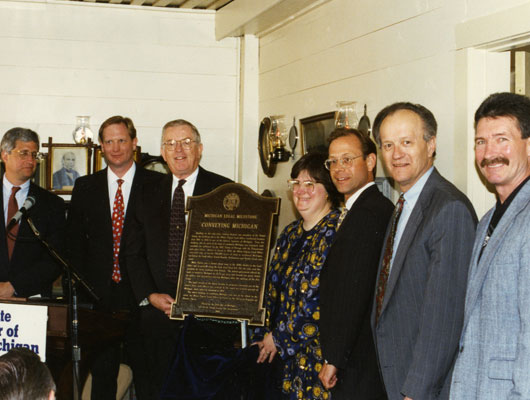Michigan Legal Milestones
23. Conveying Michigan

Much of the land in southwest Michigan was conveyed out of the White Pigeon Land Office, built in 1831 and still standing. Dedicated on April 30, 1996, and placed at the land office (on south side of US-12) in downtown White Pigeon. The building is now a museum operated by the St. Joseph County Historical Society.
Complete Text on Milestone Marker
Conveying Michigan
Standing on this site since Andrew Jackson was president of the United States, the building where the White Pigeon Land Office conducted business from 1831 to 1834 is one of the historic treasures of Michigan. From this building, title to much of the land in southwest Michigan was conveyed, made available for settlement by the 1821 Treaty of Chicago with the Pottawatomis and other tribes. Before it closed in 1834, the White Pigeon Land Office conveyed title to nearly 260,000 acres of land in southwest Michigan, including the land where Grand Rapids, Kalamazoo and Battle Creek now stand.
White Pigeon was a frontier boom town in the 1830s, thanks to the Land Office and its position along the Sauk Trail (now U.S. 12), the only road then available for travel southwest from Detroit. The federal government offered the lands in southwest Michigan for $1.25 per acre, and demand was great, fueled by settlers and speculators entering Michigan after the opening of the Erie Canal.
The legal record of the chain of title to the state's lands conveyed out of the little land offices throughout the state was critical to the rapid but orderly growth of Michigan.
The oldest building in southwest Michigan and one of the oldest in the state, the White Pigeon Land Office is listed on the National Register of Historic Places.
Placed by the State Bar of Michigan and the St. Joseph County Bar Association, 1996.